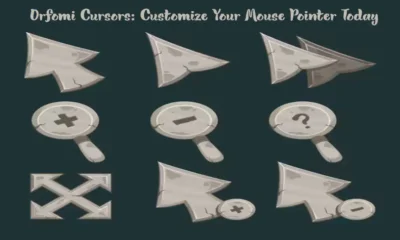HEALTH AND FITNESS
Guiding Every Smile: How Orthodontists Monitor Progress Over Time

Orthodontic care involves more than just braces and aligners—it’s a process shaped by constant monitoring, adjustments, and long-term planning. The path to a straight, healthy smile is guided through ongoing assessments that help track how teeth and jaw structures respond to treatment. While many patients may only notice small visible changes at each appointment, orthodontists are observing a range of subtle developments beneath the surface. This monitoring process ensures that the treatment stays on course, that complications are caught early, and that the outcome is both functional and long-lasting.
We will explore the various ways orthodontists in Duluth, MN,assess progress, from digital scans and X-rays to patient feedback and biomechanical testing, showing how personalized care is at the heart of every evolving smile. Understanding this process helps patients appreciate the thoughtful detail and consistent care behind every step of their orthodontic journey.
Table of Contents
Ongoing Steps in Orthodontic Progress Tracking
1. Initial Baseline Assessments Create the Foundation
Before any treatment begins, orthodontists perform a full diagnostic assessment to understand each patient’s current dental and skeletal structure. This typically involves digital photographs, panoramic x-rays, 3D scans, and bite impressions. These tools give a complete picture of tooth alignment, jaw symmetry, and bone density. Having this thorough baseline allows orthodontists to create a treatment plan with clearly defined goals. It also serves as the comparison point for every future check-up. Without this first snapshot, it would be difficult to know how far a patient has progressed.
These images are often stored digitally so that changes can be observed side by side over months or even years. This early step is crucial because every movement in orthodontics—no matter how small—depends on a clear understanding of where things started. It’s the roadmap that guides every turn.
2. Regular Adjustment Appointments Maintain Treatment Direction
One of the most visible signs of progress monitoring happens during adjustment appointments, typically scheduled every 4 to 8 weeks. At these check-ins, orthodontists review how the teeth have moved since the last visit. Using precise measurements and visual comparisons, they decide whether to tighten wires, add elastics, or change aligner sets. These decisions are not arbitrary—they are based on the individual’s response to previous adjustments. Some teeth may move faster or slower than expected due to differences in bone density or how well a patient has followed instructions.
Orthodontists take all of this into account before making any changes. These appointments also give them the chance to address discomfort, monitor oral hygiene, and correct any signs of damage to appliances. Every visit build on the last, keeping treatment steady and goal focused. This continuous involvement is what keeps everything moving in the right direction.
3. Digital Imaging Tracks Movement with Accuracy
In recent years, digital imaging has become one of the most valuable tools in orthodontic monitoring. Intraoral scanners and 3D imaging systems allow orthodontists to create accurate models of a patient’s mouth without the need for messy impressions. These images can be compared over time to track exactly how the teeth are shifting in response to treatment. This digital approach provides a level of precision that manual measurements often miss. It’s especially useful for clear aligner treatments like Invisalign, where new trays are designed based on small, incremental changes.
These scans also help orthodontists detect issues that can’t be seen with the naked eye, such as slight rotations or asymmetrical movement. With this technology, progress is no longer a matter of guesswork. Every millimeter of movement is recorded and evaluated, allowing adjustments to be made with complete confidence in the data.
4. Patient Feedback Plays an Informative Role
While much of the monitoring process is rooted in science and imaging, patient feedback also plays an important role in guiding treatment. Orthodontists often ask about pain levels, how aligners fit, and whether patients have experienced any loosening or breakage in appliances. These conversations help reveal how well a patient is responding to treatment and how compliant they’ve been with instructions.
For example, if a patient reports difficulty with elastic bands or isn’t wearing their aligners the recommended number of hours, the orthodontist can intervene with practical solutions. This feedback loop ensures that patients are not just passive recipients of care but active participants in their progress. It also helps build trust and communication, which is essential for long-term success. When combined with clinical data, patient input provides a fuller picture of treatment and helps orthodontists make more informed decisions. Orthodontic progress is shaped by a cycle of evaluation, adjustment, and response that continues long after appliances are placed. It’s not simply about straightening teeth but ensuring they move in harmony with the jaw, muscles, and bite pattern. By using baseline diagnostics, regular in-person assessments, advanced imaging, and patient feedback, orthodontists stay closely connected to each stage of the journey. Even after treatment ends, monitoring continues through the retention phase, emphasizing the commitment to lasting results. Ultimately, monitoring is what transforms orthodontics from a mechanical process into a personalized path that evolves, one adjustment, scan, and conversation at a time.
-

 GENERAL5 months ago
GENERAL5 months agoChristofle – For Those Who Dream of Family Heirloom Silver
-

 SPORTS7 months ago
SPORTS7 months agoDiscover the World of Football with Streameast: Watch Your Favorite Leagues and Tournaments
-

 GENERAL4 months ago
GENERAL4 months agoUncovering the World of кинокрадко: The Dark Side of Film Piracy
-

 GENERAL2 months ago
GENERAL2 months agoATFBooru: Anime, Gaming, and Subculture Imageboard





























